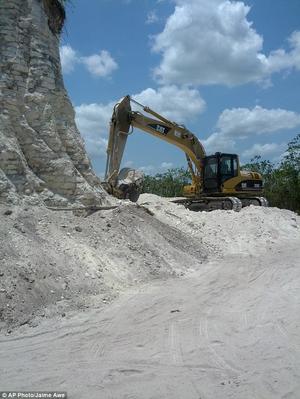
In comparison to many of its neighbors in Central America and the Caribbean, Belize has pursued a very effective and comprehensive policy of conservation in order to capitalize on the growing segment of eco-tourism. However, given the stresses of economic development, Belize is facing a difficult balancing act when it comes to determining the limits of environmental and cultural conservation.
Like most Caribbean countries, Belize is burdened with extremely high-energy costs—yet it was expected that this would change when Belize discovered deposits of oil in 2005. This recent discovery of oil has sparked a debate about the future of Belize’s economic development. Earlier this year, the Belizean court stopped government plans to begin contract offshore oil deposits to inexperienced companies in the Meso American Reef—the world’s second largest barrier reef and a World Heritage Site. Due to the devastation brought by the BP oil spill in the Gulf of Mexico in 2010, the decision to drill within such an ecologically sensitive and important zone was regarded as highly controversial within Belize. The court case resulted from the work of conservation organizations sparking a “people’s referendum” in which 96% of those who participated voted against offshore drilling.
The desire of Belize’s people to protect their environment in spite of official government policy could be seen with the seaside village of Placencia voting against the construction of a cruise ship port which would see ships carrying 3,000 passengers arrive weekly. The Placencia Tour Operators Association voted in 2010 to block the development, stating that it would result in “adverse effects on the area's fragile marine and inland environments such as coral reefs and fish and bird habitats.” Furthermore, cruise ship passengers were regarded as undermining Placencia’s overnight tourism industry and its many small businesses. Despite the local opposition, Belize’s Prime Minister, Dean Barrow, recently remarked that local communities (it is estimated that 60% of the population are classified as living in poverty) should consider the economic benefits of constructing a port for mass cruise tourism.
Despite these important victories, not all efforts to protect important sites have been positive. The latest example of economic development undermining Belize’s cultural heritage could be seen with the bulldozing of the 100-foot tall Mayan pyramid located in the Nohmul complex which is over 2300 years old. The pyramid was bulldozed as filler for a new road in the northern part of Belize.
Under the law, all Mayan pyramids in Belize are protected, yet it appears that the incident at Nohmul was not the only instance. Norman Hammond, a professor of archaeology at Boston University remarked that “bulldozing Maya mounds for road fill is an endemic problem in Belize (the whole of the San Estevan center has gone, both of the major pyramids at Louisville, other structures at Nohmul, many smaller sites), but this sounds like the biggest yet.” It has been reported that a criminal investigation is underway and charges may be laid against the construction company. Meanwhile, the political opposition has argued that the construction of the road into northern Belize was poorly planned but carried out on government orders to gain support from the region.
While it appears that the people of Belize have often been the catalyst for conservation in spite of recent government policy, it remains to be seen how long this can continue. The people of Belize realize that the conservation of the environment will provide opportunities for the long term despite the pressures of foreign investors, and the government seems intent on undermining the ecological and cultural treasures of Belize for short-term economic profit. It can only be hoped that other nations in the region become inspired by the example set by the people of Belize in rejecting mass tourism in favor of smaller scale but more sustainable model.
Kevin Edmonds is a NACLA blogger focusing on the Caribbean. For more from his blog, "The Other Side of Paradise," visit nacla.org/blog/other-side-paradise. Edmonds is a former NACLA research associate and a current PhD student at the University of Toronto, where he is studying the impact of neoliberalism on the St. Lucian banana trade. Follow him on twitter @kevin_edmonds.

